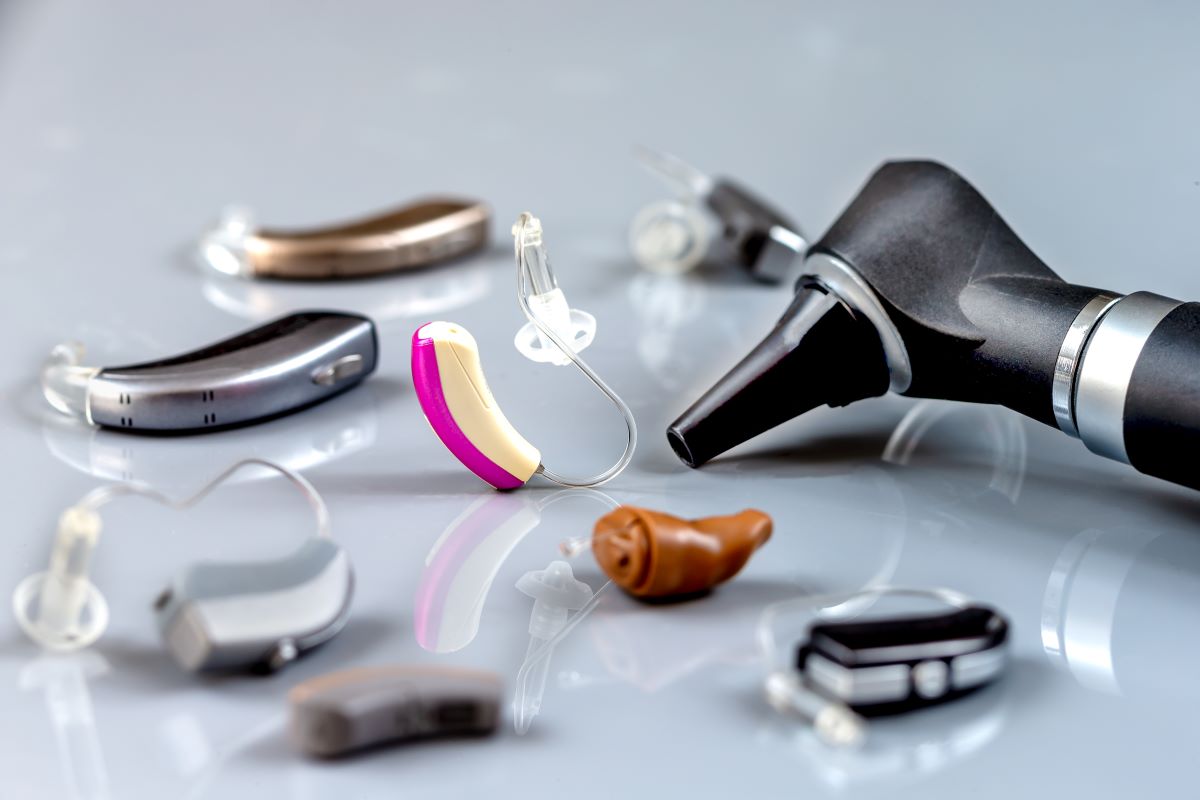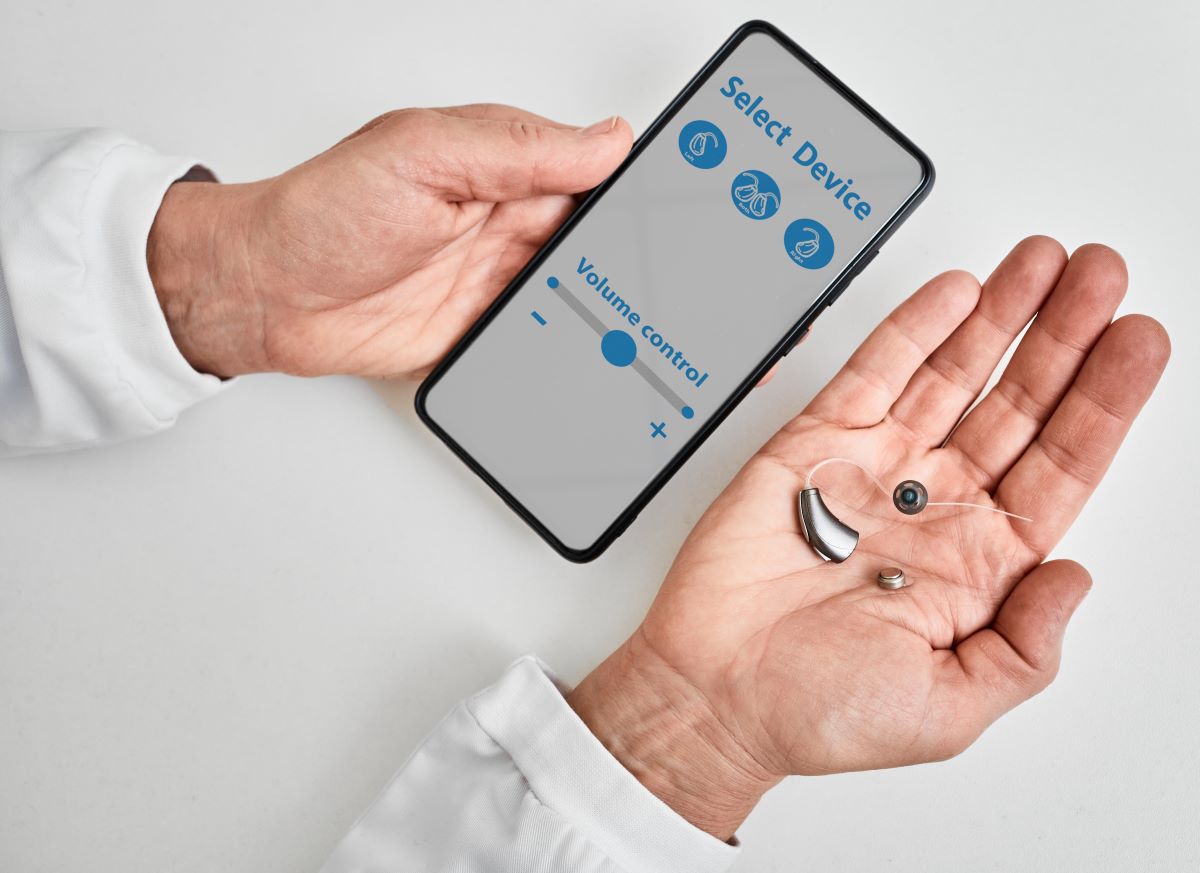Hearing loss is an incredibly common disability, in fact, one in six UK adults suffers from some degree of hearing impairment.
However, this doesn’t take away from how hearing loss can often make a person feel frustrated and isolated. Fortunately, hearing aids are a powerful solution that can alleviate these feelings and help those suffering to regain control of their lives.
That being said, choosing a hearing aid can be a daunting task, given the huge variety of styles, designs and features available today. Modern hearing devices are packed with useful features and technology but this can be overwhelming for the first-time wearer, so it’s important that you recognise the features that you need.
In this article, we’ll cover the key differences between each hearing aid style, how to figure out the features you’ll need and generally how to go about getting the perfect device to suit you.
What are the different types of hearing aids?
There are three main types of hearing aids, all designed to cater to different hearing abilities.
Behind-the-ear (BTE)
BTE hearing aids are the most common type of device, consisting of a small plastic case that sits behind the ear, connected to an earmould or earpiece by a thin tube.
Who are they suitable for?
BTE hearing aids can be prescribed for any type of hearing loss, from mild to severe.
Advantages
- Easy to use
- Less feedback problems due to a larger separation between microphone and receiver
- Ideal for most people regardless of hearing loss severity
- Rarely requires repairs
Disadvantages
- Can be larger than other types of hearing aids
- Ear moulds require remaking every 2-4 years to preserve the seal
- Need to be retubed every so often
![]()
In-the-ear (ITE)
ITE hearing aids are custom-made to fit inside the ear canal and are available in two styles: completely-in-canal (CIC) and in-the-canal (ITC).
Who are they suitable for?
ITE hearing aids are suitable for those with mild to moderate hearing loss.
Advantages
- Less visible than other types of hearing aid
- Ideal for glasses wearers
- Irritation behind the ear is prevented
- Produces less wind noise
- Sound is closer to the eardrum
Disadvantages
- More delicate and vulnerable than other types of hearing aid
- Maintenance can be difficult due to the small size of the device
- The filter can be clogged with wax quickly and need replacing more often
- Smaller batteries with less battery life
![]()
Receiver-in-canal (RIC)
RIC hearing aids are similar to BTE’s but have a smaller case and a speaker that sits inside the ear canal, connected by a thin electronic wire as opposed to a tube.
Who are they suitable for?
RIC hearing aids are suitable for most types of hearing loss, from mild to severe.
Advantages
- Often smaller in size and more discreet than BTE
- Provide good sound quality with no sound loss
- Less prone to feedback
- Comfortable to wear
Disadvantages
- The speaker that sits in the ear can easily become clogged with ear wax
- Small and delicate, therefore requiring a great deal of care
![]()
The different hearing aid features and technology
When choosing a hearing aid, it’s important to distinguish between the features that are important to you and those that aren’t. That starts by understanding the core features that can be used to enhance your listening experience.
Basic features
Basic hearing aids can often have a limited range of adjustments for customisation unless programmed by a computer, and they usually require the user to manually adjust settings to suit the listening environment. However, the below features are often included in many basic hearing aids.
Noise reduction
Added noise reduction technology can reduce background noise and improve speech clarity, making it easier and more comfortable to hear clearly in noisy environments.
Wind reduction
Ideal for those who spend a lot of time outdoors, hearing aids can offer a level of wind reduction; how noticeable this is will depend on the model of the device.
Directional microphones
Directional microphones focus on the sounds in front of you and reduce background noise. This is ideal for helping you to hone in on the person speaking to you when in a noisy environment such as a restaurant or a group setting.
Telecoil
Telecoil technology allows you to pick up sound directly from a telephone or other electronic devices, without picking up background noise. You’ll often find connection loops in places such as theatres which makes listening to the show or speaker easier.

Advanced features
When you step into the territory of more advanced hearing aids, there is an abundance of features that are available to help enhance your listening experience and ensure that it caters to your lifestyle.
Bluetooth compatibility
Many of today’s modern hearing aid devices are fitted with Bluetooth connectivity, allowing you to stream audio directly from your TV, smartphone or any other device. This makes it easier to watch your favourite shows, listen to music and take phone calls.
Smartphone apps
Advanced hearing aids now come with smartphone apps, allowing you to adjust your settings straight from your phone. They have the ability to route your phone calls straight to the hearing aid, and some can even convert speech into text.
Rechargeable batteries
Rechargeable hearing aids ensure that you’re never stuck in a situation where your device has run out of power and eliminates costly frequent battery replacements.
Read more: Finding the correct batteries for your hearing aids
Tinnitus masking features
If you struggle with tinnitus, some of the most advanced hearing aids can be programmed to emit sounds that mask the ringing in your ears, giving greater clarity to the sounds you’re trying to listen to.
Artificial Intelligence (AI)
Some top-of-the-range hearing aids incorporate programmed artificial intelligence (AI) which accesses a deep neural network to process sounds. This means they will process and save the user’s preferences for certain listening environments and automatically implement these when the user finds themselves in a similar situation.

Factors to consider when choosing a hearing aid
With so many options available, there is a hearing aid for everyone; no matter their hearing ability. However, there are a few factors to consider that will influence your decision in the buying process.
Lifestyle factors
The key to getting the right hearing aid for you is ensuring that it suits you and your lifestyle perfectly. For example, if you’re active and enjoy spending time outdoors, you may be more suited to a BTE or RIC hearing aid, whereas a person living a more sedentary lifestyle may prefer an ITE.
Personal preferences
A hearing aid is something that you’ll live with for years to come, so it’s important to make sure you’re happy with your choice and that it serves your individual requirements. Key considerations include size, colour, style, and any additional technology that you need.
Budget
Hearing aids are an investment, and it’s important to consider your budget when making a decision. Sure, all of the additional technology and features might be tempting – but do you really need them? Can you afford to pay more? Not all of them may be suited to your particular needs, so you might be able to opt for a cheaper alternative.
Getting a hearing aid consultation
The only way you’ll be able to find the perfect hearing aid for you is by having a professional hearing test conducted by a reputable audiologist.
Hearing tests consist of diagnostic assessments to analyse your current hearing ability and identify the type and severity of your hearing loss. Here at Sutton Hearing Care, we take the time to also ask questions about how you’re feeling, how your hearing is affecting you and what you struggle with the most. From there, we can make an accurate diagnosis and recommend the best hearing aid suited to you and your needs.
Read more: Booking your first hearing test: What to expect
We can supply hearing aids from industry-leading manufacturers including Phonak, Oticon, Starkey and Widex. We have access to an extensive catalogue of devices and we don’t have an affiliation with any particular manufacturer. This means you’ll get the exact device that works for you and your budget.
We offer in-depth and professional hearing tests at our two hearing clinics in Sutton and Solihull. If you’re struggling with your hearing, get in touch with us.

